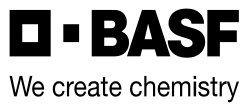Sefina
Group 9D
Quickly stop aphid and whitefly damage in fruits and vegetables.
- Effectively inhibits feeding to limit damage and disease spread
- Provides extended duration of control
- Controls insects that may have developed resistance to other insecticides
- Effective tool in an integrated pest management strategy with low impact on beneficial insects, including predatory and parasitic insects when used according to the label
Labels & SDS
7 AVAILABLE
Labels & SDS
Benefits of Sefina
- Sefina is a chordotonal organ TRPV channel modulator
- Sensory neurons send continuous and misleading signals
- Brain can’t detect sound, gravity or body part movement / position
- Rapidly stops feeding. Control via starvation/dehydration – Disorientation
Product Info & Application Guide
How Much to Apply
Begin applications once locally recommended thresholds are reached.
| Crops | Pests | Application rates |
|---|---|---|
| Brassica vegetables1 | Cabbage aphid, green peach aphid | 81 ml/ac (0.2 L/ha) |
| Sweet potato whitefly, silverleaf whitefly | 283 to 405 ml/ac (0.7 to 1.0 L/ha) | |
| Cucurbit vegetables1 | Melon aphid, green peach aphid | 81 ml/ac (0.2 L/ha) |
| Sweet potato whitefly, silverleaf whitefly | 283 to 405 ml/ac (0.7 to 1.0 L/ha) | |
| Fruiting vegetables1 | Green peach aphid, potato aphid | 81 ml/ac (0.2 L/ha) |
| Sweet potato whitefly, silverleaf whitefly | 283 to 405 ml/ac (0.7 to 1.0 L/ha) | |
| Leafy vegetables1 | Green peach aphid, potato aphid, lettuce aphid | 81 ml/ac (0.2 L/ha) |
| Sweet potato whitefly, silverleaf whitefly | 283 to 405 ml/ac (0.7 to 1.0 L/ha) | |
| Leaf petioles vegetables1 | Green peach aphid, potato aphid, lettuce aphid | 81 ml/ac (0.2 L/ha) |
| Sweet potato whitefly, silverleaf whitefly | 283 to 405 ml/ac (0.7 to 1.0 L/ha) | |
| Tuberous and corm vegetables1 | Green peach aphid, potato aphid | 81 ml/ac (0.2 L/ha) |
| Sweet potato whitefly, silverleaf whitefly | 283 to 405 ml/ac (0.7 to 1.0 L/ha) | |
| Pome fruits2 | Rosy apple aphid, green apple aphid | 81 ml/ac (0.2 L/ha) |
| Stone fruits3 | Rusty plum aphid, black cherry aphid, mealy plum aphid | 81 ml/ac (0.2 L/ha) |
| Hazelnuts3 | Filbert aphid | 81 ml/ac (0.2 L/ha) |
1 Do not apply more than 1012 ml/ac (2.5 L/ha) per year.
2 Do not apply more than 404 ml/ac (1.0 L/ha) per year.
3 Do not apply more than 162 ml/ac (0.4 L/ha) per year.
Application Tips
- Ensure thorough and uniform coverage by using higher water volumes.
- Do not apply during periods of dead calm or when winds are gusty.
- Do not make more than two sequential applications of Sefina insecticide before using an effective insecticide with a different mode of action.
Water Volume
Ground Application
40 to 80 L/ac (10 to 20 gal/ac)
Mixing Order
- Fill clean spray tank 1/2 full of clean water and start agitation.
- Add the correct amount of Sefina and continue to agitate until mixed.
- If tank mix is being applied, add the correct amount while continuing agitation.
- Clean the spray tank after use.
Pre-harvest interval
7 days after application for pome fruits, stone fruits, hazelnuts and tuberous and corm vegetables
Tank Mixes
Contact AgSolutions® Customer Care at 1-877-371-BASF (2273) or your BASF Sales Representative for more information on supported tank mixes.
Follow Crops
0 months after application (same season)
- Brassica head and stem vegetables
- Cucurbits
- Fruiting vegetables
- Leafy vegetables
- Soybeans
- Tuberous and corm vegetables (including potatoes)
- Root crops
2 months after application
All other crops not listed on label when the maximum seasonal rate is 162 ml/ac (0.4 L/ha).
4 months after application
All other crops not listed on label when the maximum seasonal rate is 1012 ml/ac (2.5 L/ha).
Resistance Management Recommendations
- Insecticide use should be based on an IPM program that includes scouting and record keeping, and considers pest thresholds, as well as cultural, biological, and other chemical control practices
- Before using an insecticide, correctly identify the pest and monitor population levels in the crop. Only treat if action thresholds (i.e., pest numbers or damage level) are met or if forecasting models expect them to be met
- Where possible, rotate the use of insecticides with different insecticide groups that control the same pests
- DO NOT exceed the total number of applications of insecticide per year
- Use tank mixtures with insecticides from a different group that are effective on the target pest when such use is permitted
- Monitor treated pest populations for resistance development
- If you suspect resistance, contact BASF or your local extension specialist
- For more information on insecticide resistance best management practices, visit https://manageresistancenow.ca/insects/


